Free shipping from $55
The Mythology
The Chinese Zodiac myth recounts how the Jade Emperor invited animals to a race, and the order in which they finished determined their position in the zodiac. The clever Rat secured the first spot by hitching a ride on the Ox's back, and the other animals followed suit, resulting in the 12-year cycle we know today. The Dragon, despite its ability to fly and being a strong swimmer, arrived after the Rat, Ox, Tiger, and Rabbit. The Dragon, who had been expected to arrive first, explained that it had stopped to make rain for the people in the village and had also helped a rabbit by providing a river current during the race. The Jade Emperor admired the Dragon's noble actions and granted it the fifth position in the Chinese Zodiac, marking the beginning of its twelve-year cycle.
The Years of the Dragon include 1916, 1928, 1940, 1952, 1964, 1976, 1988, 2000, 2012, 2024...
In Chinese folklore, the dragon is revered for its auspicious qualities, and its presence is believed to bring good luck and prosperity. As we usher in the majestic Year of the Dragon, a symbol of strength, fortune, and transformation, it's a fitting time to explore the rich cultural tapestry that intertwines this mythical creature with the world of tea.
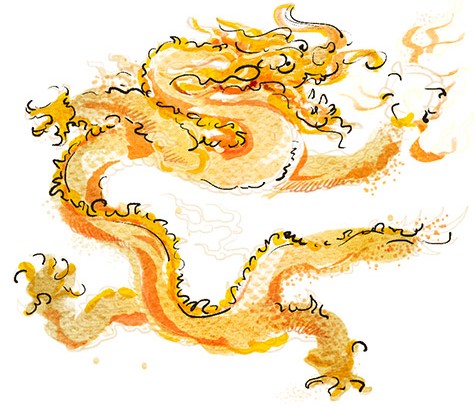
Tea, an integral part of daily life in many Asian cultures, plays a significant role in Lunar New Year celebrations. The act of sharing tea is a symbol of hospitality and unity, and during the Year of the Dragon, it takes on an even more profound meaning. Families and friends come together to enjoy the warmth of each other's company, sipping on fragrant teas that carry centuries-old traditions within each cup.
The ceremonial preparation and consumption of tea during this auspicious time echo the dragon's own transformative nature. Tea ceremonies, whether elaborate or simple, provide a moment of reflection and connection with the past, present, and future. The careful pouring of tea symbolizes a stream of positive energy, bringing forth harmony and balance in the Year of the Dragon.
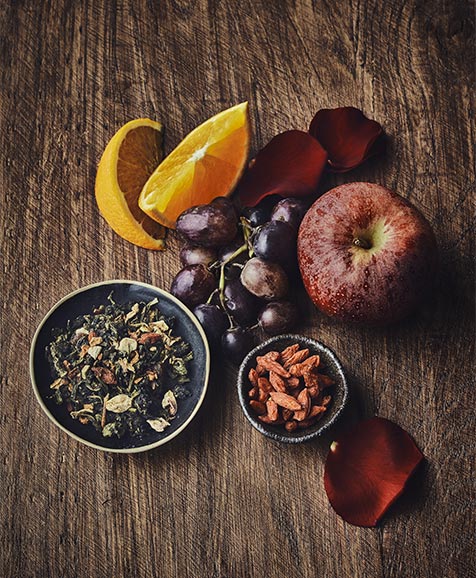
Ba Bao Cha
To celebrate the Year of the Dragon, Palais des Thés is offering its own unique and exceptionally fragrant Ba Bao Cha creation. It is made from a base of jasmine and oolong (“black dragon”) teas. The latter is a roasted black tea whose leaves resemble a dragon’s body. Added to the mix is a combination of apple, grape, orange, goji berry, ginseng and rose, making for a deliciously delicate interpretation of a traditional Ba Bao Cha. When paired with a cherry clafoutis or apple crumble, its gentle fruity and floral notes are revealed in all their glory, while served alongside a summer roll will create a fresh contrast.
Ba Bao Cha is usually served during special occasions or to very important guests. Served hot or cold, it symbolizes good fortune, happiness and prosperity, just like the dragon. It is a delicious tea with an ever-changing palette of flavors, making it the perfect partner for a celebratory meal, where it pairs wonderfully with Sichuan cuisine, as well as the cuisines of the Yunnan and Zhejiang provinces. It is one to be enjoyed all throughout the Year of the Dragon!
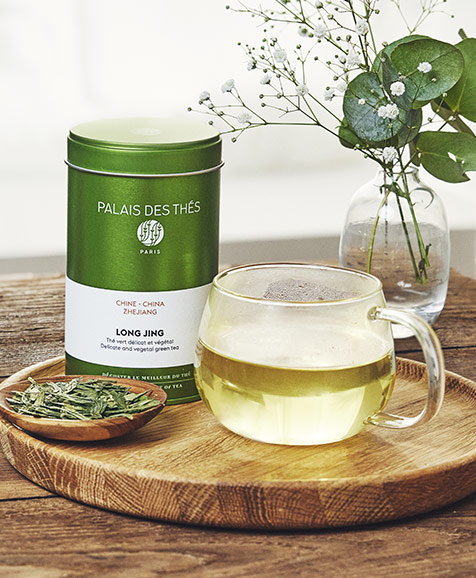
Dragon Well Tea
There are many other teas associated with dragon symbolism. Dragon Well tea, also known as Long Jing, a renowned Chinese green tea, is often enjoyed during this period. The tea's name is derived from the legend that a dragon residing in a well blessed the water, imparting it with unique properties. Its delicate, flat-pressed leaves unfurl gracefully, offering a mild and refreshing flavor that resonates with the spirit of the dragon. ago. It comes from the hilly countryside surrounding the city of Hangzhou and the banks of the West Lake, an ancient tea-producing region. As its popularity grew, its cultivation gradually spread across many other provinces.It offers a complex aromatic profile of vegetal and minerals notes, with a roasted chestnut finish.
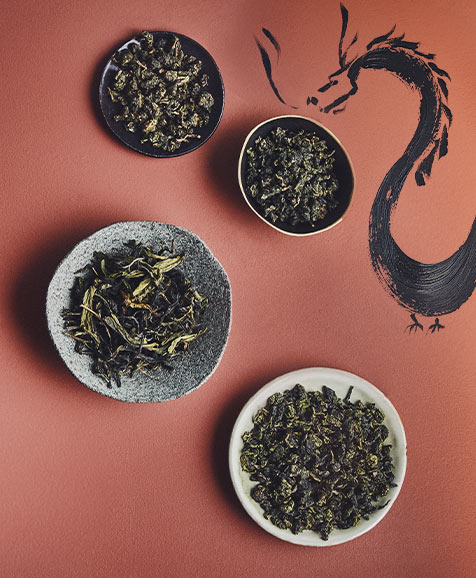
Black Dragon
Oolong tea or “black dragon”tea, with its diverse and intricate flavors, is another popular choice during this auspicious year. Like the dragon, oolong tea undergoes a fascinating transformation during its production, reflecting the dynamic and evolving nature of life. Its mysterious moniker, translating to "black dragon," pays homage to its deep hue and the intricate, curled form the lengthy leaves assume during the drying process. Oolong tea presents a unique flavor experience—simultaneously gentle and potent, rich and delicate—crafting a nuanced flavor profile that mirrors the multifaceted personality of a dragon.
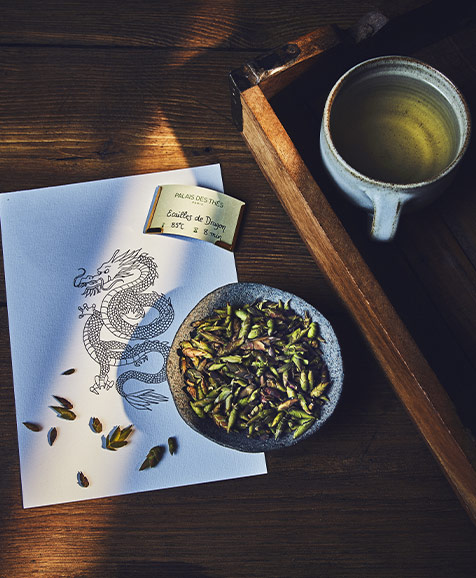
Dragon Scales Tea
This year we are introducing a Grand Cru tea made from fascinating distinctive buds that look like dragon scales. The leaf’s shape is like no
other: the bud forms multiple branch points which gives it that
distinctive dragon-scale look. The intriguing name also lives up to its equally intriguing flavor. Once infused and ready to be drank, many surprises are in store: the tea liquor yields a buttercup yellow glow, with a fresh and floral aroma and a generous, supple and oily texture, with a sweet note of tropical fruits. I detect passion fruit and lychee, A rare tea with notes of exotic fruits and grapefruit.
